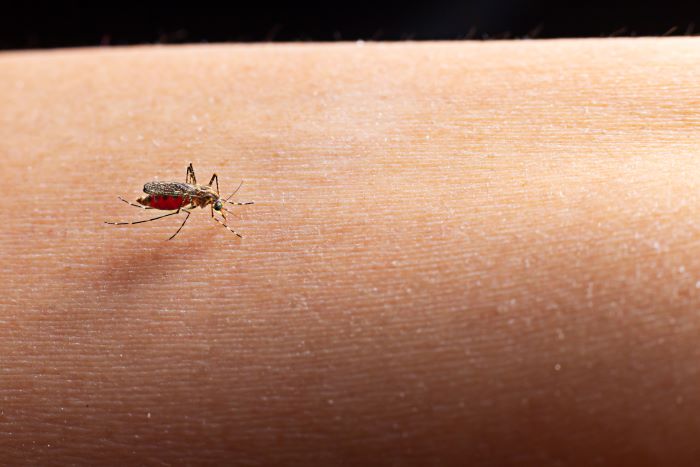How to Prevent Dengue Fever: Tips and Advice : helping you prevent Dengue Fever effectively. Dengue fever, a viral illness primarily transmitted by Aedes mosquitoes, poses a significant health risk in many parts of the world. But here’s the good news: prevention is entirely within your grasp. In this blog, we provide expert insights and practical tips to empower you with the knowledge and tools you need to safeguard yourself and your loved ones from Dengue Fever. Join us on this journey to discover actionable strategies that will reduce your risk and keep you well-informed. Stay safe and stay protected!
Table of Contents
Understanding Dengue Fever:
Before we dive into the prevention strategies, it’s important to have a basic understanding of dengue fever:
1. Symptoms:
High temperature, severe headache, eye pain, joint and muscle pain, rash, and a propensity to bleed are among the signs of dengue fever. Dengue hemorrhagic fever and dengue shock syndrome, both of which carry a risk of death, can develop from the illness in extreme cases. For controlling these problems and halting future deterioration of the patient’s health, prompt medical care is essential.
2. Transmission:
Aedes aegypti is a common vector for the dengue virus, which is mostly spread to people via the bite of infected female Aedes mosquitoes. When an infected mosquito bites a person, the virus enters the person’s bloodstream through the mosquito’s saliva. This ongoing cycle of transmission highlights the significance of public health programs and mosquito control measures to lower the prevalence of the illness and lessen its effects on effected people.

How is dengue fever diagnosed ?
1. Clinical Evaluation:
Symptom Assessment:
The clinical symptoms of the patient are evaluated by medical professionals as part of the dengue fever diagnostic process. These evaluations involve determining whether recognizable symptoms including a high fever, a severe headache, and discomfort from joint and muscle pain are present. They additionally check the skin for the presence of a typical rash. This thorough symptom evaluation assists in spotting possible dengue cases and directs additional diagnostic procedures and treatment choices.
Medical History:
Healthcare professionals thoroughly review the patient’s medical history to make a diagnosis of dengue fever, paying special attention to any signs of dengue infection. This includes asking about recent trips to locations where dengue is a prevalent problem, as being exposed to infected mosquitoes there raises the risk. The patient’s history of mosquito bites, probable interaction with others who have dengue, and any prior dengue episodes are also taken into account. Healthcare providers can make an accurate diagnosis and choose the best treatment options by thoroughly evaluating the patient’s medical history and probable exposure.
2. Laboratory Tests:
- Serology: Blood tests, such as enzyme-linked immunosorbent assay (ELISA) and polymerase chain reaction (PCR), can detect specific antibodies and viral RNA to confirm dengue infection.
- Complete Blood Count (CBC): A CBC helps identify changes in blood cell counts, such as a decrease in platelet count, which is common in dengue fever.
- Hematocrit Measurement: An elevated hematocrit level may indicate plasma leakage, a hallmark of severe dengue.
Treatments for Dengue Fever:
No Specific Treatment :
There is no specific treatment for dengue fever. Treatment is supportive and aimed at relieving symptoms and preventing complications. Treatment may include:
- Fluids to prevent dehydration
- Pain relievers, such as acetaminophen or ibuprofen
- Bed rest
- Hospitalization for severe cases
1. Supportive Care:
Patients with dengue fever are often advised to rest, stay hydrated, and take pain relievers (such as acetaminophen/paracetamol) to alleviate fever and pain. Avoiding non-steroidal anti-inflammatory drugs (NSAIDs) like ibuprofen is important because they can increase the risk of bleeding.
2. Fluid Replacement:
In cases of severe dengue or dengue hemorrhagic fever, where there is significant fluid loss due to bleeding or plasma leakage, intravenous (IV) fluids may be required to maintain hydration and prevent shock.
3. Platelet Transfusions:
In severe cases with extremely low platelet counts or active bleeding, platelet transfusions may be necessary to address the risk of hemorrhage.
4. Monitoring:
Close monitoring of vital signs, blood counts, and clinical symptoms is crucial to detect any deterioration and provide timely intervention.
5. Hospitalization:
Severe cases, especially those with dengue hemorrhagic fever or dengue shock syndrome, may require hospitalization for intensive medical care.
6.Prevention of Mosquito Bites:
To prevent further transmission, dengue patients should be protected from mosquito bites during their illness to avoid infecting other people.
7. Vaccination:
In some regions, a dengue vaccine is available. Consult with healthcare professionals to determine if vaccination is recommended for you or your family. Vaccination can provide partial protection against some of the dengue virus serotypes, reducing the risk of severe disease
Tips and Advice for Dengue Prevention
1. Mosquito Control:
a. Eliminate Breeding Sites: Aedes mosquitoes breed in stagnant water. Regularly check your surroundings for stagnant water in containers like flower pots, buckets, and discarded tires. Empty and clean them to eliminate breeding sites.
b. Use Larvicides: Consider using larvicides (chemicals that kill mosquito larvae) in water storage containers that cannot be emptied, such as water tanks.
c. Use Mosquito Nets: Sleeping under a mosquito net can be highly effective, especially in areas with a high prevalence of dengue
2. Personal Protection:
a. Use Insect Repellent: Apply an insect repellent on exposed skin and clothing, especially during peak mosquito activity hours. Choose a repellent containing DEET, picaridin, or oil of lemon eucalyptus.
b. Wear Protective Clothing: Wear long-sleeved shirts, long pants, socks, and shoes to minimize exposed skin.
c. Stay Indoors: Whenever possible, stay indoors during peak mosquito activity hours, which are usually early morning and late afternoon.
Dengue Fever and Climate Change
Dengue fever is a mosquito-borne viral disease caused by the dengue virus, primarily transmitted to humans through the bite of infected Aedes mosquitoes, especially Aedes aegypti. While climate change itself does not directly cause dengue fever, it can significantly influence the distribution, prevalence, and transmission dynamics of the disease in several ways:
1. Temperature and Mosquito Behavior:
Aedes mosquitoes can develop faster due to warmer temperatures brought on by climate change. Higher temperatures may decrease the mosquito’s maturation period from egg to adult, which could result in more mosquito generations each year. This may raise the danger of dengue transmission and the overall mosquito population.
2. Extended Transmission Season:
Elevated temperatures and altered rainfall patterns can extend the period during which mosquitoes are active and capable of transmitting the virus. This extension of the transmission season can lead to a higher likelihood of dengue outbreaks.
3. Weakened Immune Systems:
Climate-related health challenges, such as heat stress and changes in disease patterns, can weaken the immune systems of vulnerable populations, making them more susceptible to dengue infection.
if You want to Join Any Para Medical course Then Click
Conclusion
Preventing dengue fever is a shared responsibility that involves individuals, communities, and healthcare systems working together. By following these tips and advice, you can significantly reduce your risk of contracting dengue and contribute to the collective effort to control this mosquito-borne disease. Stay informed, stay proactive, and stay protected to enjoy a mosquito-free life and better health for yourself and your community.


Pingback: Children's Health in Focus: Child Care Best Practices for Cough, Cold, and Fever : As a child care provider, you play a vital role in promoting the well-being